Three
A FIRM FOUNDATION
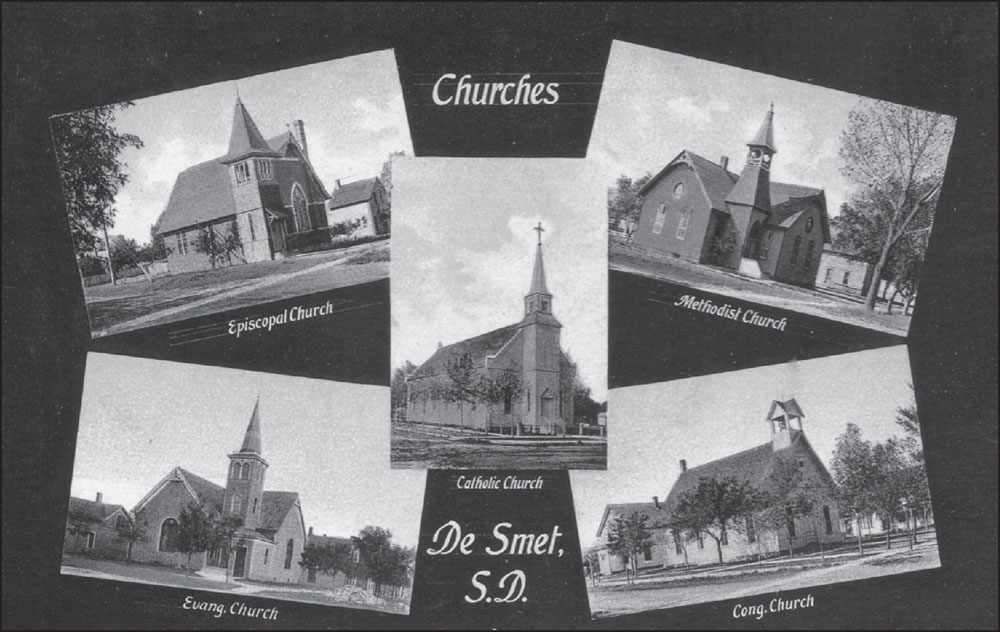
In 1880, most Protestants met for worship services in either the railroad depot or the public schoolhouse; however, throughout the years, the faith and dreams of De Smet residents were seen in the erecting of several main line churches in the community. The diversity and overall faith of its residents created a firm, strong foundation through which the small town absorbed the strength needed to endure.
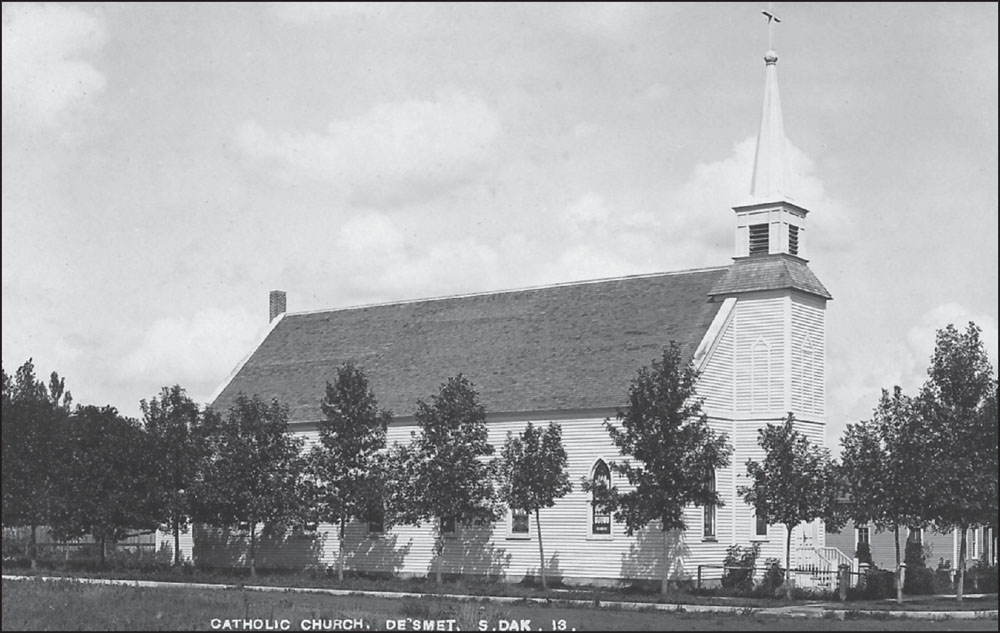
“Never give up!” was the solemn vow of the Catholic parishioners in this small community. In 1883, a tiny church was erected, only to be destroyed in a windstorm. In 1884, they built a more substantial building, the one shown in this photograph, only to have it completely destroyed by fire in 1918.
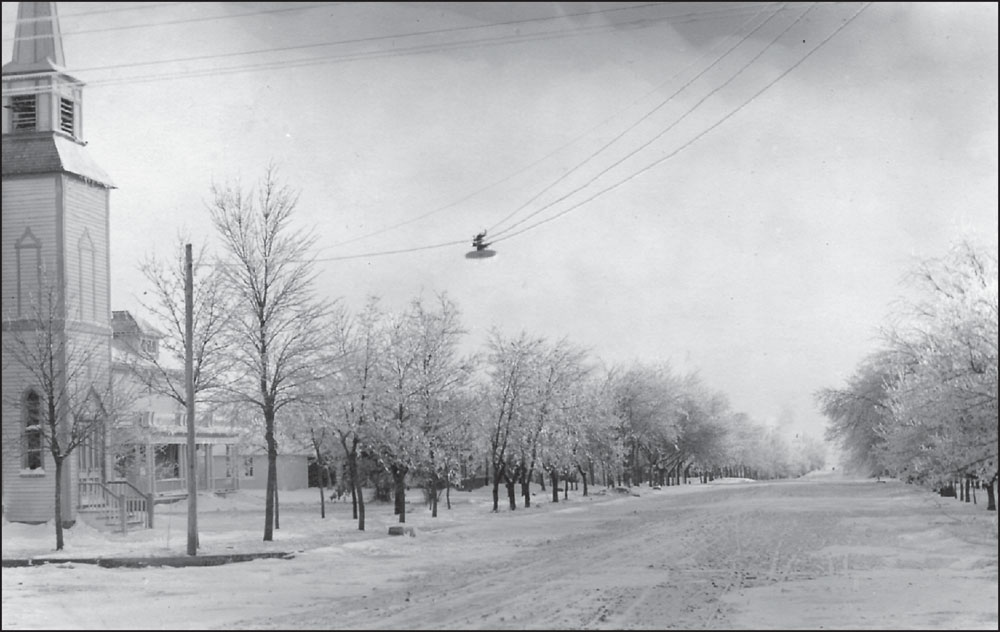
A flourishing Catholic membership built a rectory in 1908; it can be seen to the right of the church. Sold and moved out of De Smet, it became a private residence in Watertown, South Dakota. The rectory was home to several priests over its years of existence.
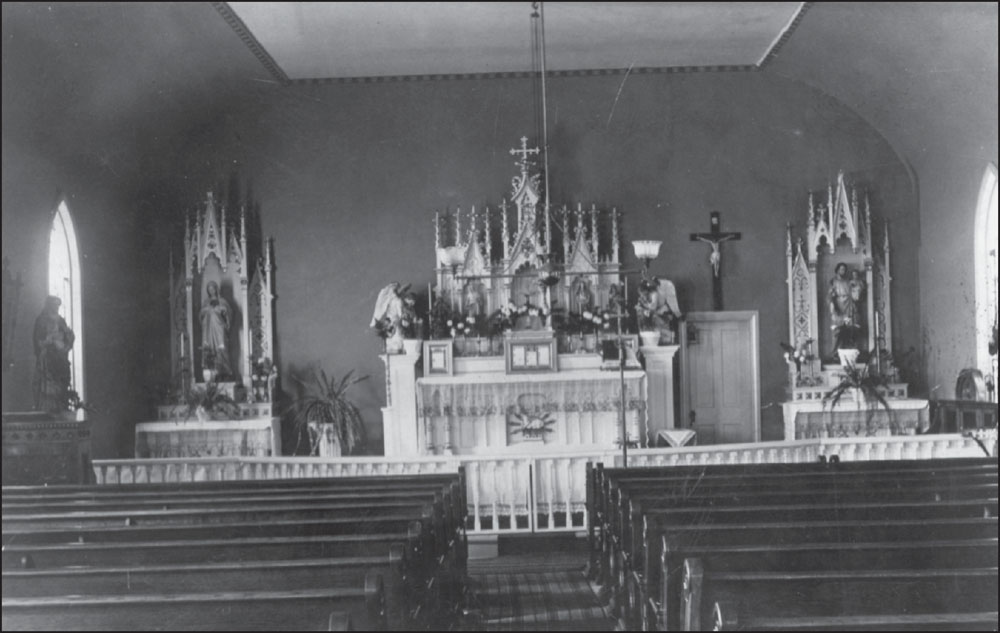
Entering the sanctuary of the small Catholic church and seeing the elegance of the altar appointments could only bring peace to the parishioners’ hearts, so when it was destroyed by fire in 1918, their hearts could only grieve.
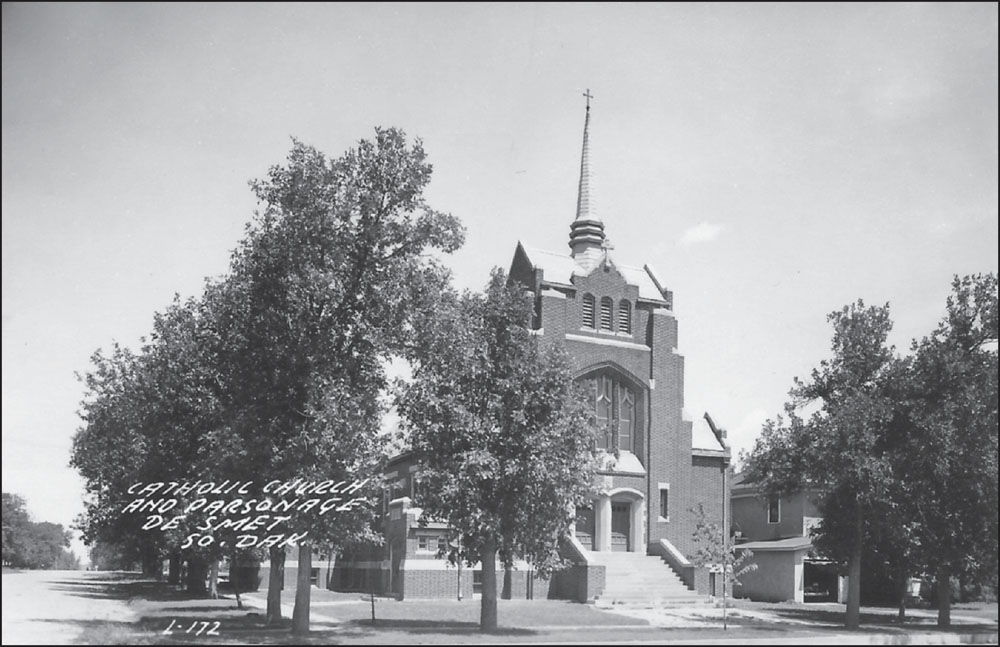
Just as a phoenix arises from its ashes, so to did this elegant Gothic-style structure. The corner stone was laid in 1920 for the present-day Catholic church. For some years, Mass was held and the sacraments distributed in the basement of the church. Work was finally completed on the interior of the church proper, and the first Mass was held upstairs in 1929—and continues to this day.
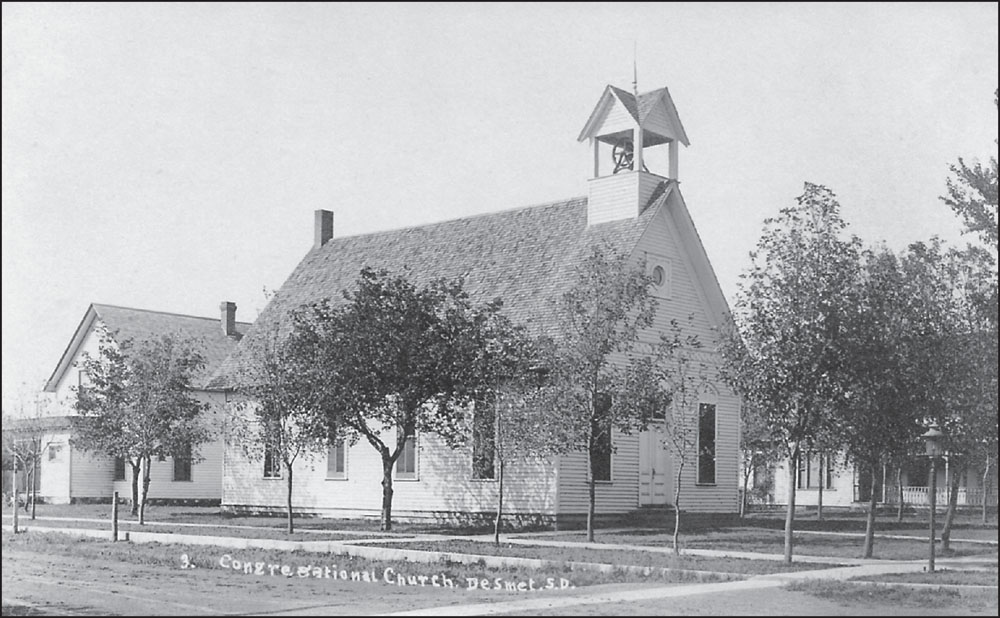
Known as the “Church that Pa [Charles Ingalls] helped build,” the Congregational church was organized in 1880. The Rev. Edward Brown held the first service on August 30, 1882. In 1884, this was the first church bell to ring in Kingsbury County, and it continues to be rung today. The church was built on the corner of Second Street and Loftus Avenue.
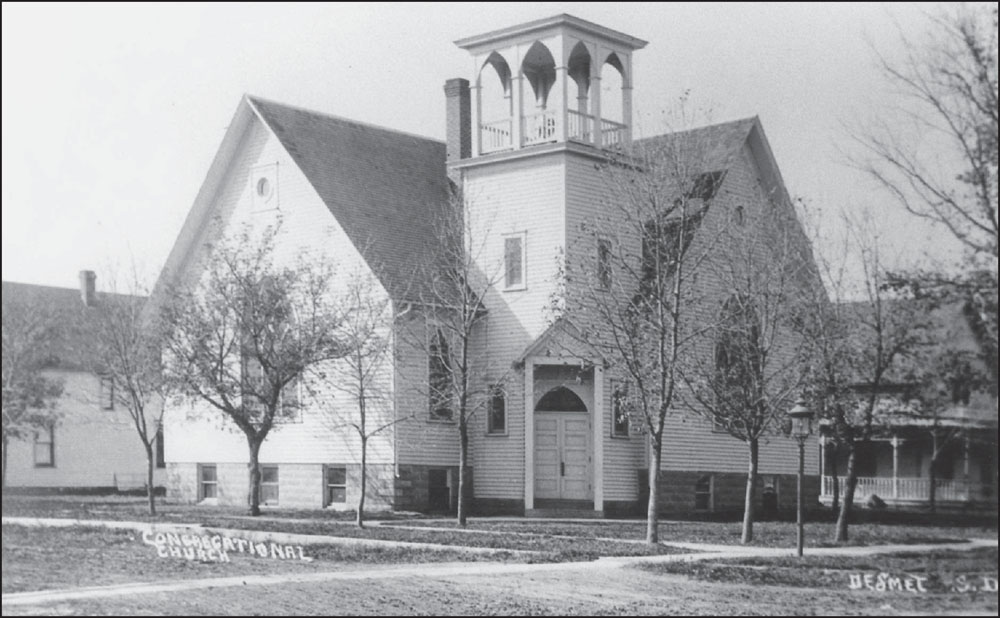
As the congregation grew, it was in need of a bigger building, so the lot to the west was bought and extensive remodeling was done in 1909. The Congregational members met here until 1967, when they sold the church to the Christian and Missionary Alliance. The large stained-glass window on the north side was a gift from the Drakola Congregational Church, near Oldham, South Dakota.
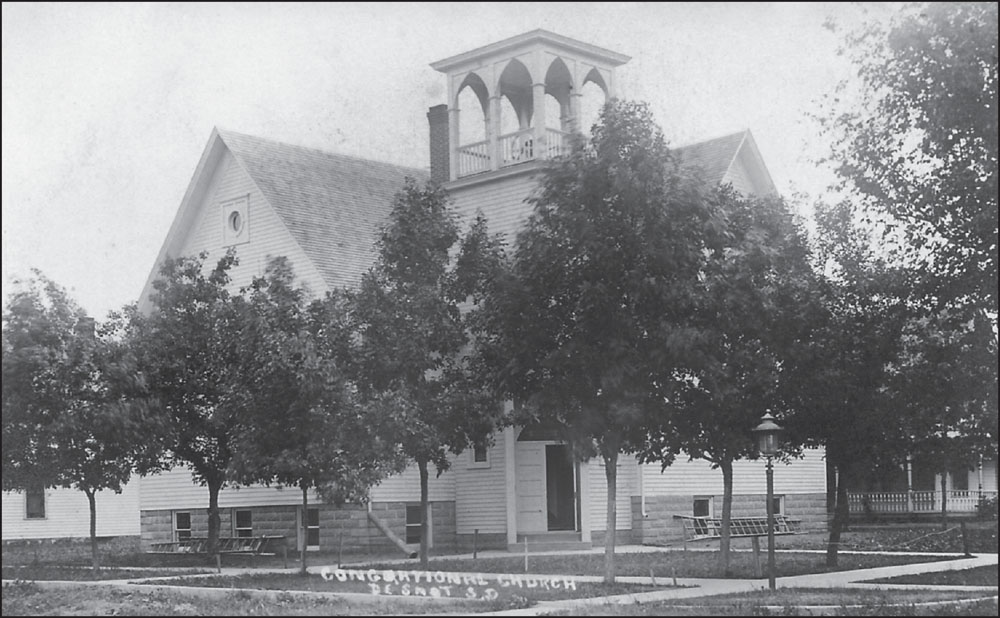
The trees are well established along the side and front of the Congregational church on Second Street and Loftus Avenue. They give a leafy background for the gas streetlight by the front sidewalk.
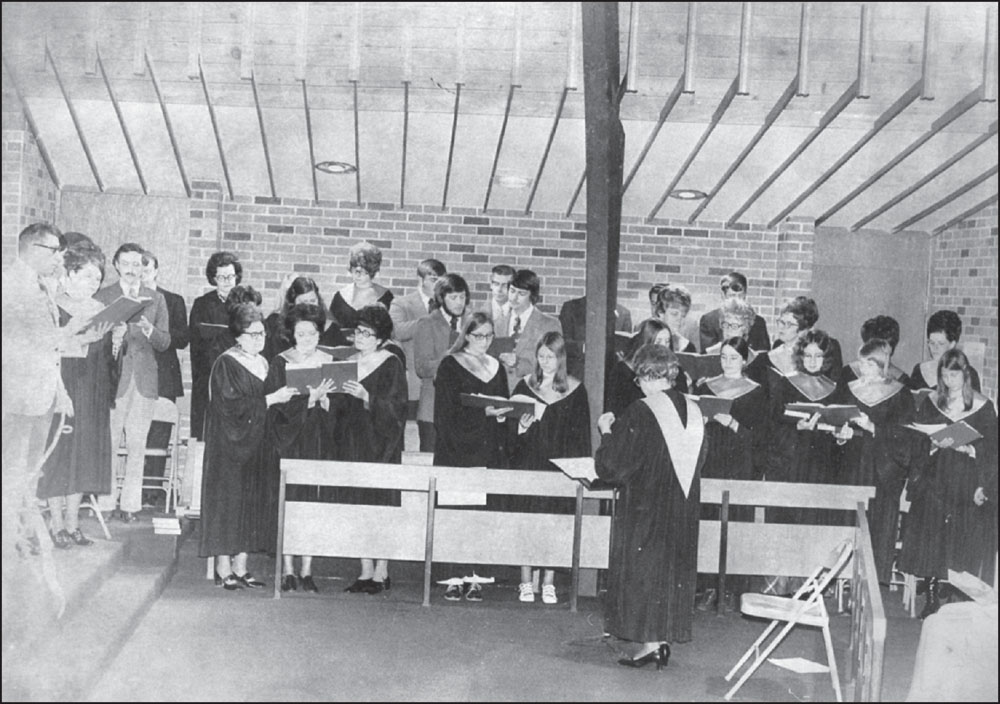
Many voices, directed by Laura Sherwood, were raised in harmony and could be heard in the First United Congregational Church, located on US Highway 14, west of De Smet. The church was dedicated in 1967, and claims the honor of having Charles and Caroline Ingalls as charter members.
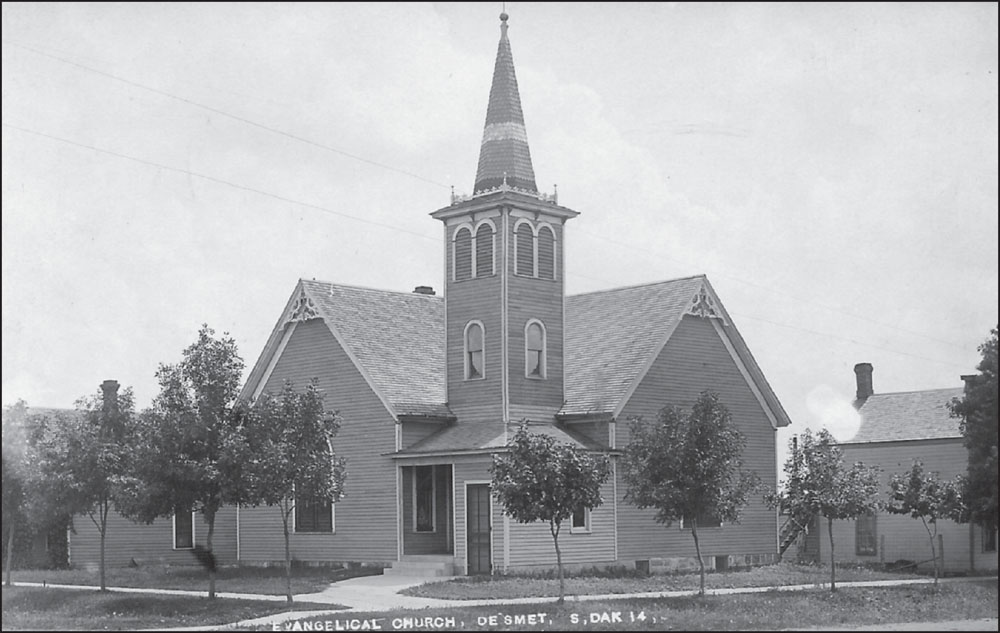
The growth and character of De Smet can be attributed to the residents’ diversified beliefs. The regal structure of the Evangelical church still stands at the corner of Calumet Avenue and Third Street. Admittedly, the appearance today does not look the same. It is now home to the Masonic Lodge and Eastern Star. The houses appearing on the right and left of the building are no longer in existence.
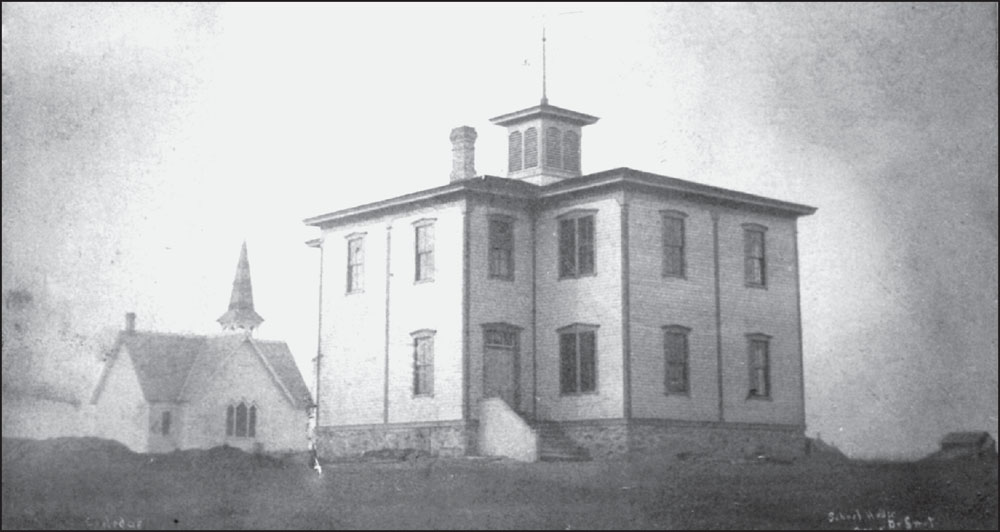
A rich heritage of faith grew in the small community, and the Baptist church in the background played its part. Because of its proximity, the school district rented the church (in background) to house the first- and second-grade classes from 1905 to 1908. The school is in the foreground.
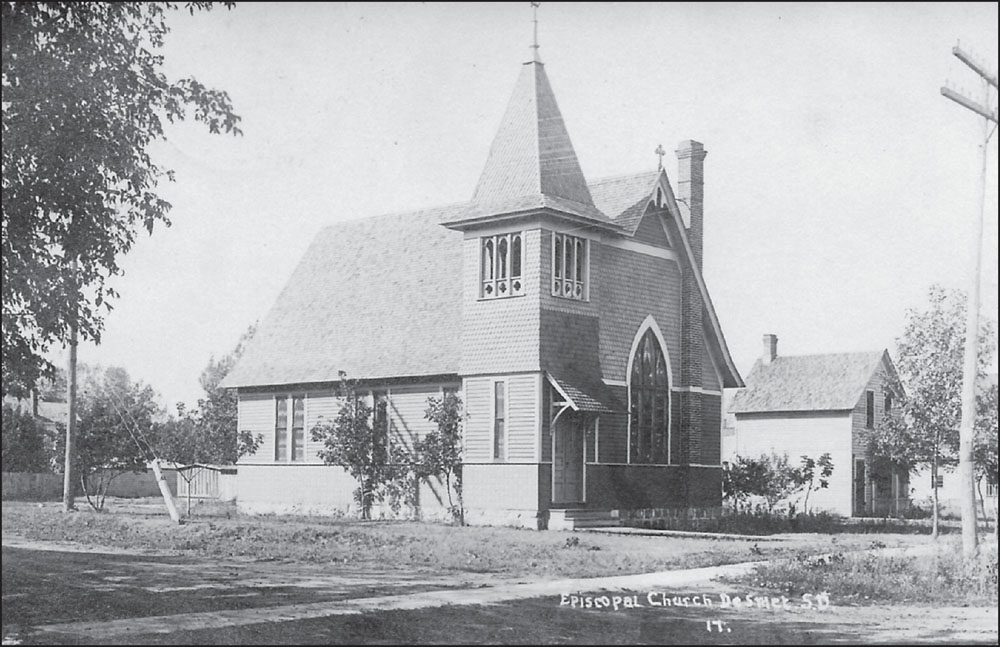
The faith and dreams of the settlers were realized when St. Stephen’s Episcopal Church was erected on the corner of Second Street and South Dakota Highway 25. To the right of the church stands the former home of the Hinz family.
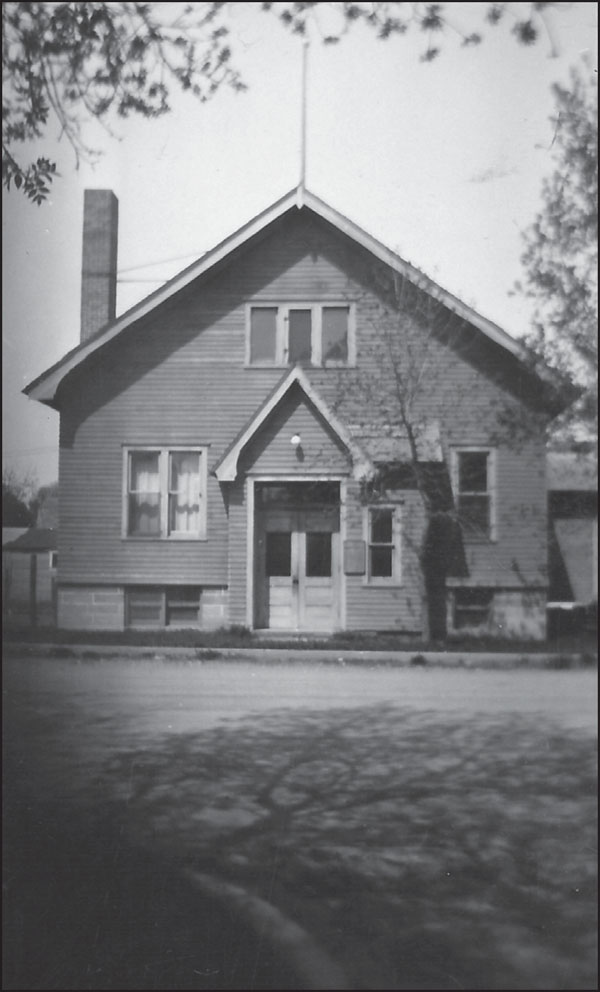
The guildhall was built later by the St. Stephen’s Episcopal Church members as a fellowship hall. It not only sufficed for their group, but was used as a meeting hall for several community and social events.
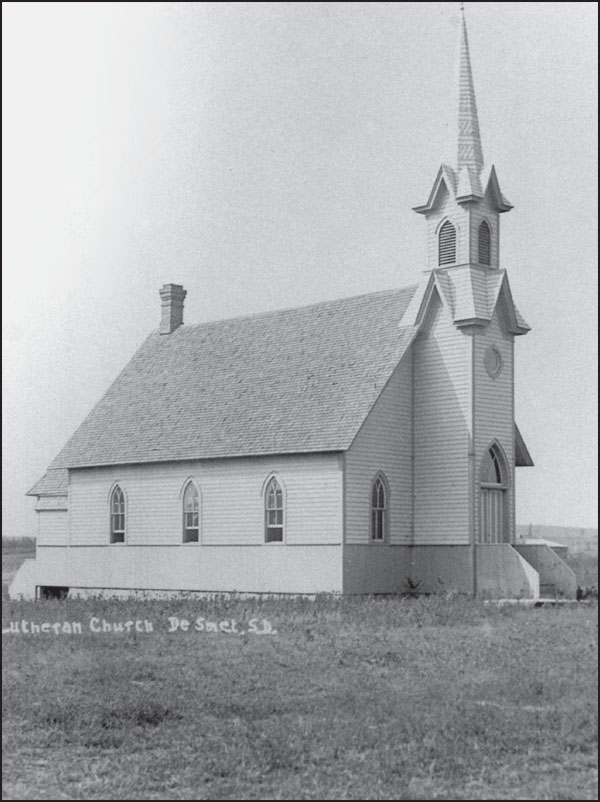
Many of the early settlers in the area were of Scandinavian and German descent. Even as they were erecting their sod houses or claim shanties, this group of settlers came up with the plan for the public preaching of the Word of God in the area. Today’s American Lutheran church is the combination of three such pioneer efforts—St. Paul (De Smet city), St. Petri (southeast De Smet), and St. Matthew (southwest De Smet).
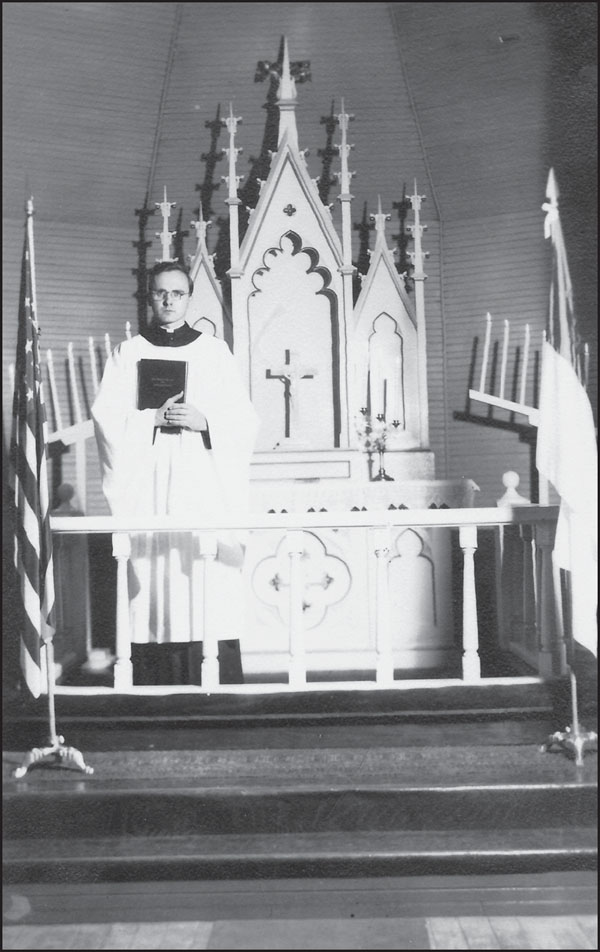
During Reverend Simonson’s ministry, he worked unceasingly to encourage the building of a new church. He instilled into the hearts and minds of the members the goal of building it. The slogan became “Work, Pray, Give.” In January 1945, the building committee began plans for the new church, and the present site was purchased. Native fieldstone was used in the random-rubble type of construction.
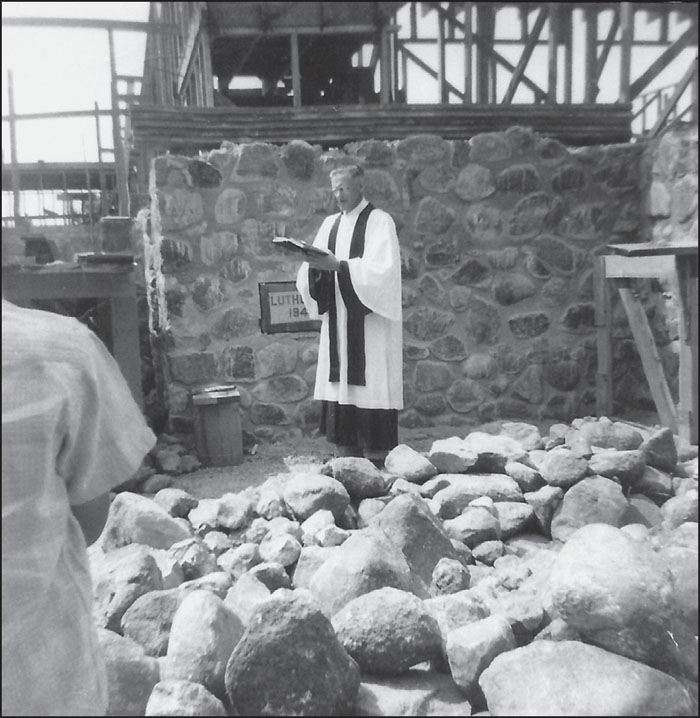
In 1947, as the walls crept higher and higher, a cornerstone was laid in the northeast corner. A copper box was imbedded in the cornerstone that included, among several items, a Bible, a Lutheran Hymnary, Luther’s Small Catechism, a written church history, a list of church members, and the De Smet News for July 4–10.
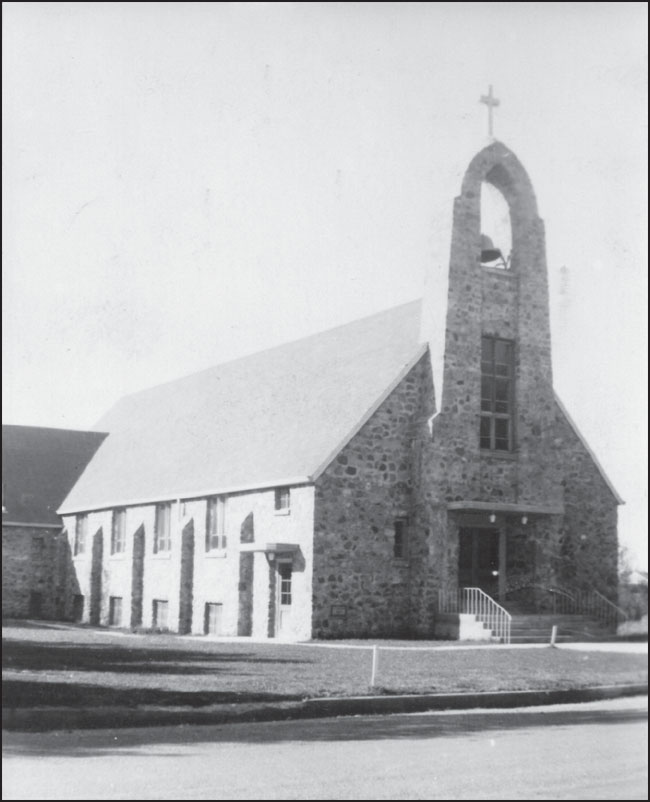
The doors of the newly built church opened to its faithful congregation in September 1949. Gone is the early settler’s wood structure, and in its place stands a beautiful native fieldstone structure. The chiming of the bell that calls the congregation to worship is the original bell from the earlier St. Matthew congregation.
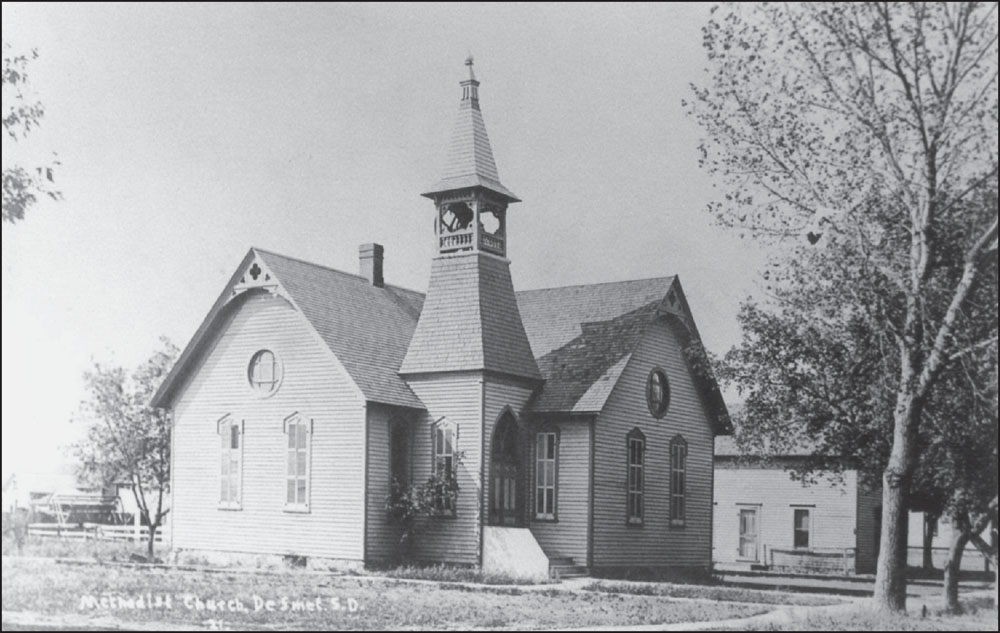
A profusion of ethnic backgrounds and beliefs led to the Methodist Episcopal church being formed in 1881. The church building was erected in 1885. It was located at the corner of Third Street and Loftus Avenue.
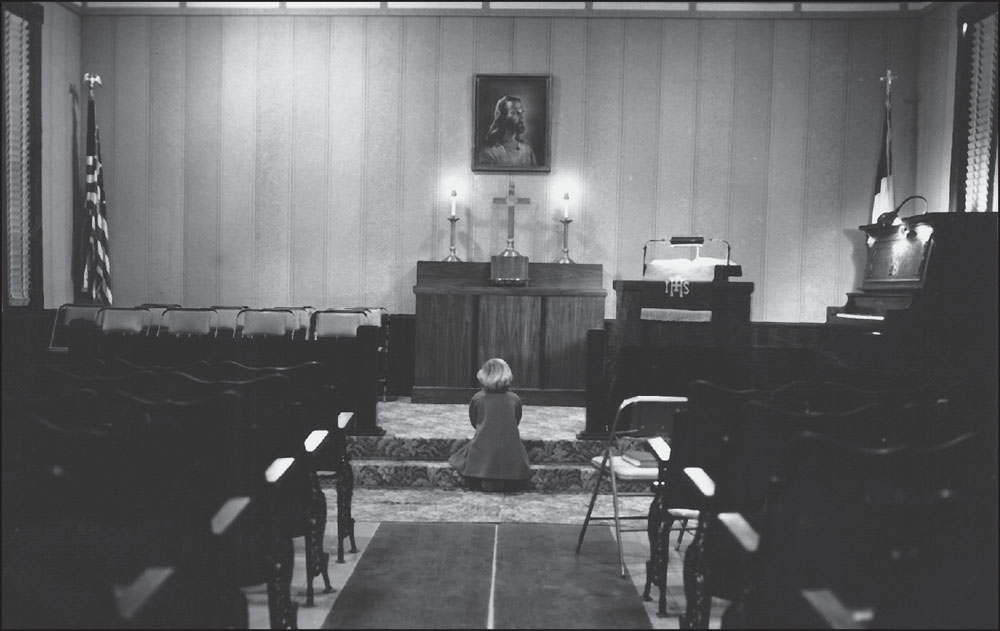
A picture of trust and comfort gleams in this photograph of one of Alice and Roy Brusse’s daughters kneeling on the sanctuary steps of the Methodist church. The sounds of praise can be imagined from the chords Louise Ruskell played during services on the piano seen to the right. Theater seats, with men’s hat holders under each seat, were in the main sanctuary.
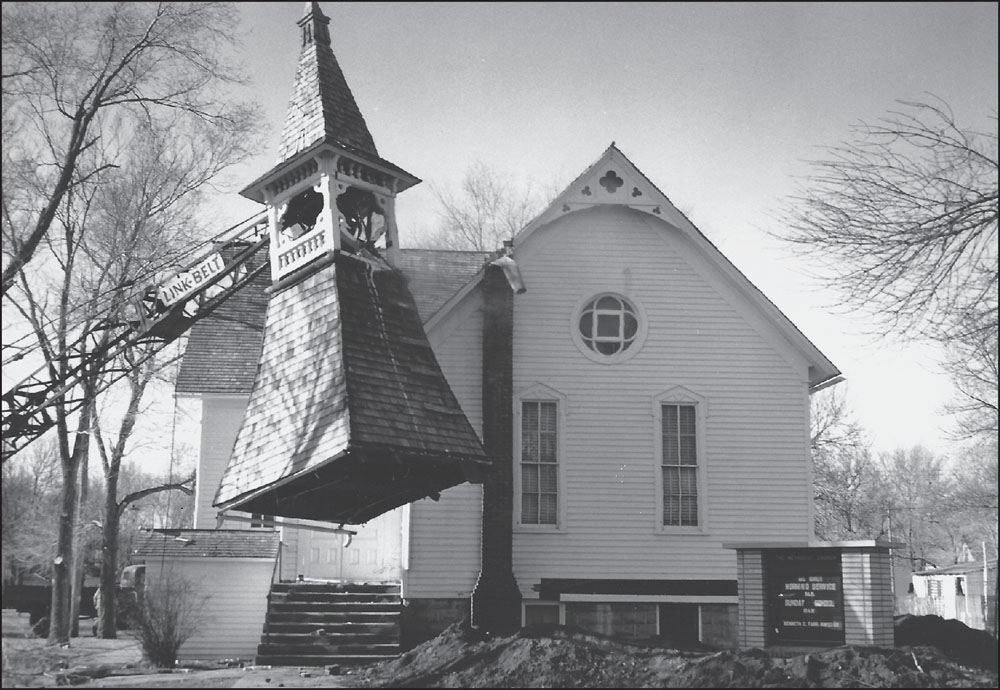
There were some smiles and some tears when the steeple was removed in 1965 for the Methodists to prepare to remodel their existing structure. The bell from the steeple now rests silently on top of the brick bulletin board seen at the right side of the photograph.
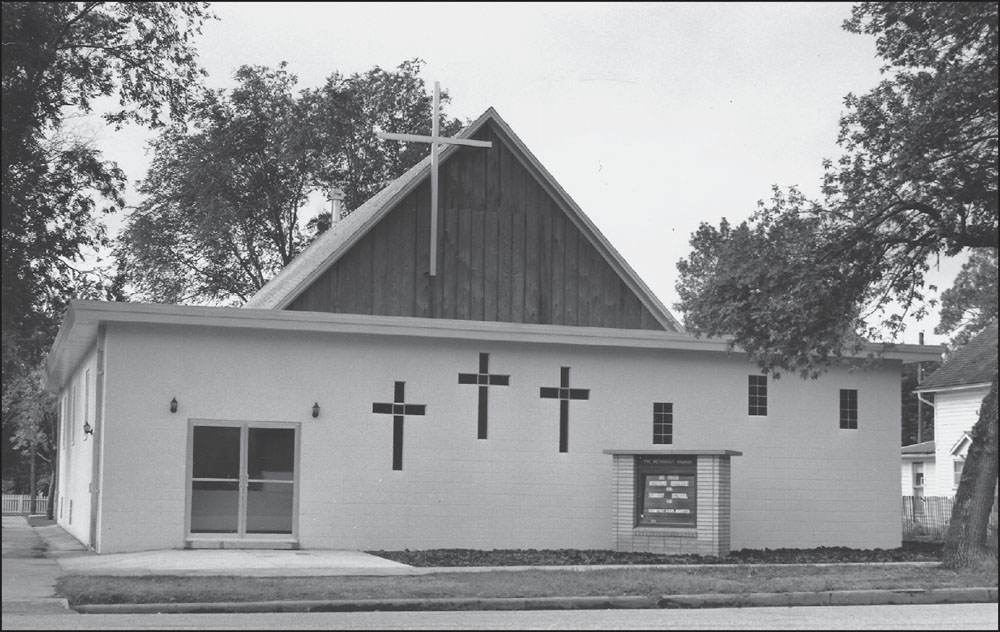
The incorporation of several denominations brought about the De Smet United Methodist Church as it is known today. This church is located at the corner of Third Street and Loftus Avenue, where it has always stood.
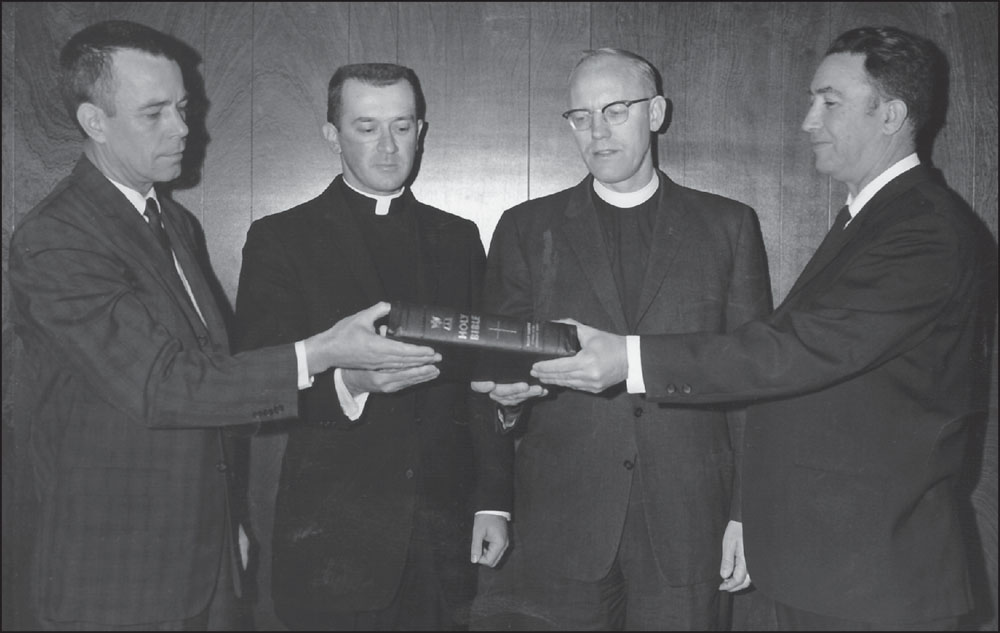
De Smet residents of the 1950s–1960s found spiritual leadership from the ministerial association that was formed by the ministers who are seen here from left to right: Rev. Robert Owen, United Church of Christ; Father Carleton Herman, St. Thomas Aquinas; Rev. LeRoy Stadem, American Lutheran; and Rev. Kenneth Farr, United Methodist.
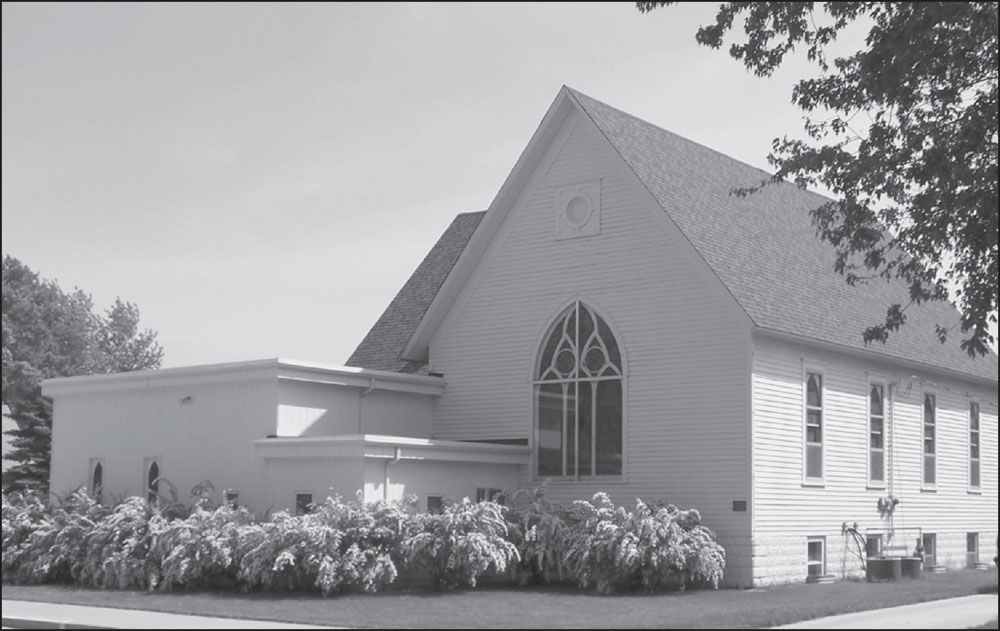
The De Smet Christian and Missionary Alliance Church originated with a group of interdenominational Christians seeking a place of worship. Prayers were answered when the former United Church of Christ church was offered for sale. The first service was held on June 11, 1967.






















